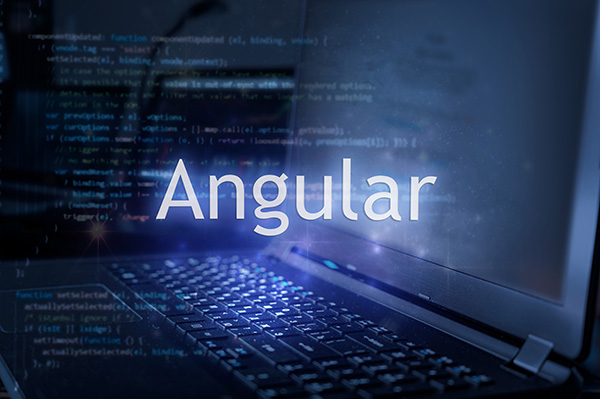It’s no longer enough to build applications for only mobile and web experiences. Nowadays, businesses have to contend with delivering compelling digital experiences across a variety of channels and Internet of Things (IoT) devices. With a headless CMS, organizations can meet the demands of users across these digital platforms.
The term headless CMS refers to a CMS that separates the front-end from the back-end of the website or app. With it, you can deliver content to any site, app, or device while having a high level of development speed and compatibility.
When developing applications with Angular, headless CMSs can be especially beneficial, since they offer a faster and more efficient approach to development. According to Statista, 41.2% of software developers report using Angular—both Angular and AngularJS—as the framework for building applications in early 2020.
In this article, you’ll learn about the advantages of a headless CMS and why you need it for your Angular applications.
Brief Introduction to Headless CMS
Essentially, “Headless” simply means a lack of a frontend. To put this in context, headless CMS is a backend-only system for managing all your content. With it, you can deliver content over an API to all your applications and digital channels.
Headless CMS utilizes an API or web service to publish content that is consumable by any frontend application. There are several SaaS and Open source headless CMS tools available to cater to your content delivery needs.
What Is Angular?
Angular is an open source web development framework built on TypesScript and maintained by Google & a community of developers and organizations. It uses a component-based framework to develop scalable applications. It brings together a variety of well-integrated libraries for managing routing, forms, client-server communications, etc.
With Angular, you get access to a robust platform that can handle single-developer projects all the way up to enterprise-level applications. Updating is quick and easy so you can take advantage of the latest developments with minimal effort.
It is also worth noting that Angular has a diverse community of nearly two million developers, authors, publishers, etc. Other reasons why Angular is the framework of choice for numerous businesses including:
- Cross-platform framework: With Angular, you can build applications for any deployment environment such as web, web app, and native mobile applications. It also provides options for code reusability through a component-based structure.
- Speed and Performance: Through Web Workers and server-side rendering, you can achieve lightning-fast speed and performance for your application. Angular provides you with full control of scalability. In addition, you can build data models using RxJS, Immutable.js, or any other push models to handle high data volumes.
- Great tooling system: Angular’s simple, declarative templates help you build features quickly. You can use a wide array of existing and custom components with the template language. Many IDEs and editors provide immediate Angular-specific assistance.
Headless CMS and Angular: Features and Benefits
Investments in multi-channel digital experience applications are on the rise. Businesses need to take advantage of platforms that offer flexibility in their development to improve user experience and drive revenue. As a frontend development framework, Angular offers an incredible amount of flexibility in building immersive digital experiences.
For any business to deliver content on Angular applications, a headless CMS is a must. It provides an editor to create content for these applications. In addition to these, a headless CMS offers support for GraphQL and REST API that makes it easy to retrieve content.
Although most CMS solutions boast flexibility, a good headless CMS should provide extensive functionality in delivering better developer experiences. And there are several factors to consider using a headless CMS for your Angular application:
API-first Approach
By their very nature, APIs are language-independent, meaning they are accessible by almost any API-compatible application or device. By having an API-first headless CMS, developers have the freedom to build frontend interfaces of choice and deliver content.
Open Source
An open source headless CMS allows developers to customize the code to meet their needs. In this way, no vendor lock-in, and vendors are dictating the technology you should use. As a matter of fact, it can be customized to meet your specific needs. For developers, open source projects are more appealing than proprietary technologies or SaaS-only solutions.
Optimized and Flexible Content Structure
You can create and deploy the specific content you need using a headless CMS to make it easier for your Angular app to filter and query content. As a result, you can save time, reduce loading time, and improve the performance of your application.
Developer-friendly
With headless CMS, developers get access to a platform they can easily customize and integrate scalable features to suit their content deployment needs. Moreover, it enhances the knowledge and skills of developers. With an open source architecture, the developer can easily proffer solutions and extend its capabilities. As a result, you aren't limited to the existing feature set.
Top Headless CMS for Angular
Crafter CMS
Crafter CMS is a headless CMS that provides distinct advantages for businesses using Angular. Crafter boasts a decoupled architecture, where content authoring (Crafter Studio) is decoupled from content delivery (Crafter Engine). Using Crafter Studio, content creators can write, live preview, and publish content for multiple channels and devices using a WYSIWYG interface. Using Crafter Engine, developers can streamline their development processes and integrations with extensible REST and GraphQL APIs.
Crafter CMS’s repository is based on Git, enabling management of all content, code, and configuration within a single, distributed repository. Through its various APIs, it also supports Angular and other front-end development frameworks, including React, and Vue.
Crafter CMS is suitable for continuous integration/continuous delivery (CI/CD) operations. Using a DevContentOps approach, content authors, IT, and operations collaborate to deliver an omnichannel experience that's seamless and engaging. Using Crafter Engine as a serverless system, DevOps can deploy highly scalable, very fast, and exceptionally secure dynamic applications.
Strapi
Strapi is another headless CMS software you can use to deliver content for your Angular application. It works with virtually any frontend framework, including React, Angular, and Vue. Angular Developers can use it to manage APIs and content. As a developer-focused platform, it offers developers flexible and extensible tools and platforms for managing and distributing content.
With Strapi, you can also create web-based apps, mobile apps, and fully functioning e-commerce platforms. The API can also be accessed via RESTful or GraphQL. In addition, it comes with a powerful CLI module, which allows you to manage, create, and edit your projects easily. It also provides support for SQL and NoSQL databases such as MySQL, MariaDB, PostgreSQL, and MongoDB.
Sanity
Sanity, like the other tools on this list, is another headless API-first platform for building engaging digital experiences. As a front-end agnostic platform, Sanity integrates seamlessly with any frontend framework such as Angular, Vue, or React. It allows content creators to easily add custom components and integrate custom workflows with a simple WYSIWYG editor. In addition, Sanity offers CLI tools for exporting, importing, and editing content.
With Sanity, content managers can continuously scale their content on a cloud-based platform that is secure and compliant. Some other features of this software are real-time content collaboration, content versioning, and live previews.
Butter CMS
ButterCMS is a headless CMS with a friendly user interface for managing and delivering digital content. With its agnostic front-end architecture, it can be used in conjunction with other development environments like Angular and React.
Developers can also integrate it with any language or framework of choice. Some of its features include relational content modeling, multi-site support, custom page types, and a customizable admin interface. The WYSIWYG interface of ButterCMS enables content editors and marketers to boost page views through SEO support.
Building Innovative Digital Experiences With Angular and Headless CMS
Gone are the days when businesses worried about delivering content across several channels. Nowadays, they can bask in the incredible possibilities that headless CMS offer. By removing the need for a particular frontend framework, content creators can focus on delivering their best work while developers work on developing intuitive frontend applications across several devices.
For Angular, headless CMS offers a unique opportunity to leverage the powerful features of frontend development with content creation. And what do you get? You get a compelling digital experience that is bound to meet your user’s demands and drive revenue in your organization.

 Alexander Fashakin
Alexander Fashakin




